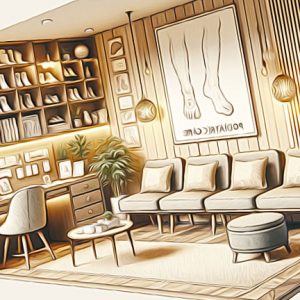
Weeks into their internship at the Cheltenham clinic, Casey found themselves at the crossroads of medical ethics and technological advancement. The adoption of cybernetic enhancements was not a straightforward path; it was laden with complex challenges and moral dilemmas. Casey, with their keen interest in both technology and human care, observed these intricacies closely, understanding that each step forward in innovation required careful consideration.
One of the prevalent conditions the clinic addressed was plantar fasciitis, a common yet painful foot ailment. Casey learned that while cybernetics offered revolutionary treatment options, they weren’t always the immediate answer. Traditional approaches still held significant value. Casey observed the podiatrists providing comprehensive foot care treatments in the Cheltenham area, often opting for conventional methods like physical therapy and orthotics before considering cybernetic options. This approach highlighted the clinic’s commitment to patient-centric care, emphasising the right treatment over the most technologically advanced one.
Casey witnessed firsthand the ethical discussions that took place when deciding whether to recommend a cybernetic enhancement. Each case was different – some patients were better suited for traditional treatments, while others could significantly benefit from the advanced technology. The clinic’s team often debated these decisions, weighing factors like the patient’s lifestyle, the severity of the condition, and the long-term impacts of choosing cybernetics.
One particular case stood out to Casey – a young athlete with chronic plantar fasciitis, struggling with the decision to opt for a cybernetic solution. The potential for enhanced performance was tempting, but the permanence of the choice and the unknowns about long-term effects made it a difficult decision. Casey observed the careful guidance provided by the clinic’s specialists, who prioritised the athlete’s overall well-being and future over the allure of a quick technological fix.
Through these experiences, Casey gained a deeper understanding of the complexities involved in integrating cutting-edge technology into healthcare. They saw that the clinic’s role was not just to treat foot conditions but to navigate the uncharted waters of medical ethics, ensuring that each step taken was in the best interest of the patients. This part of Casey’s journey shed light on the delicate balance between embracing technological advancements and honouring the principles of traditional medical care.